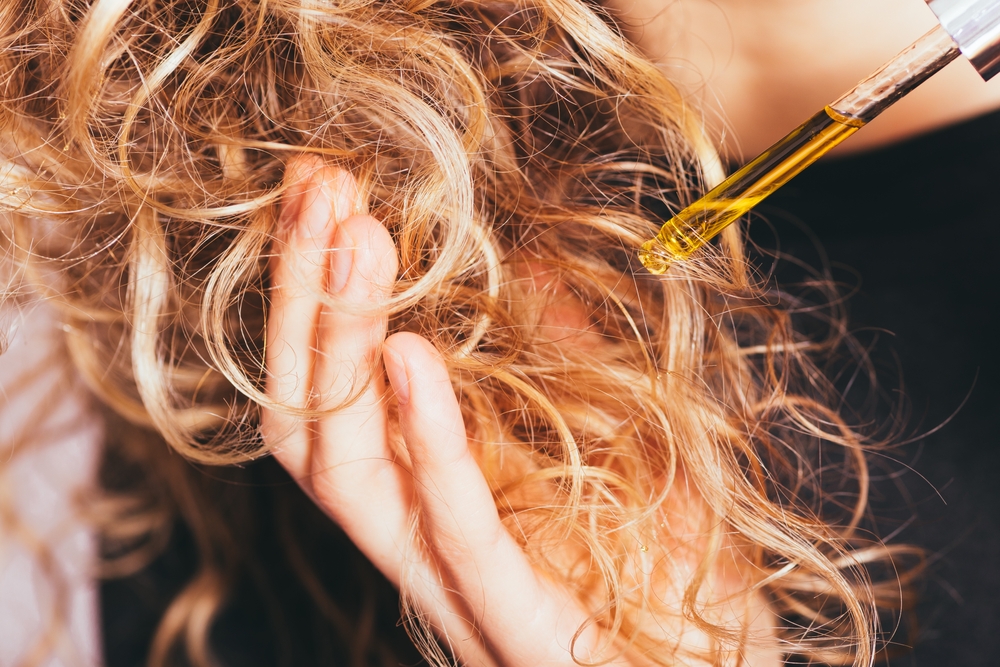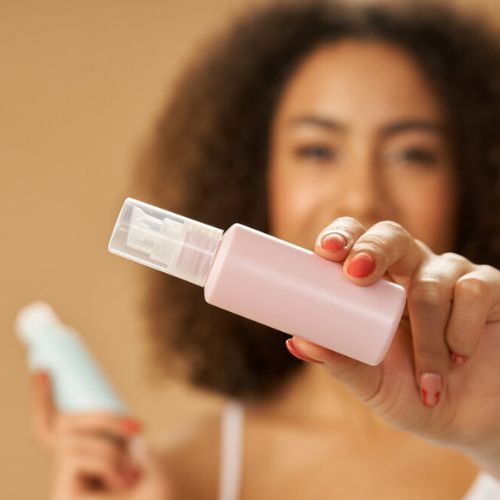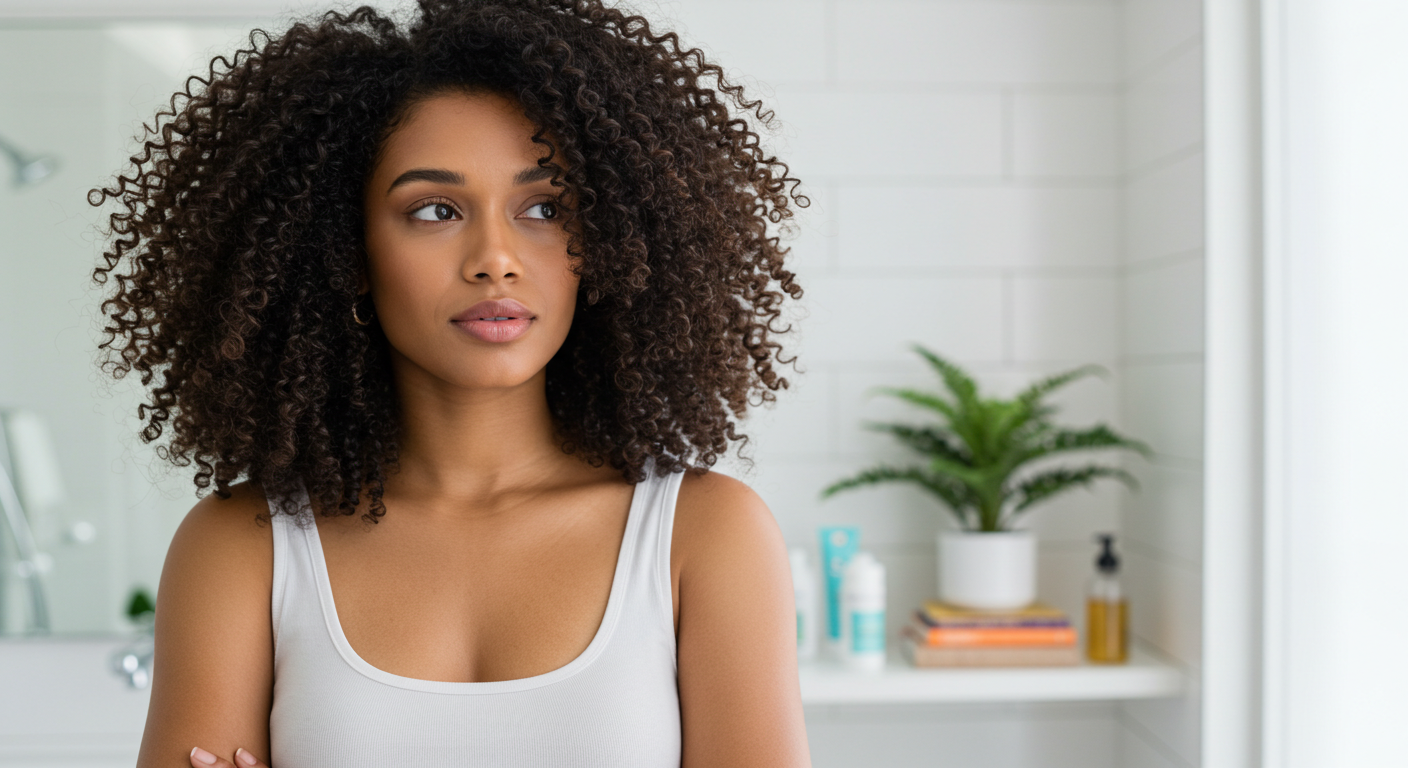Struggling with dry and unmanageable hair can be a frustrating experience, often indicating low porosity hair. This hair type has difficulty absorbing and retaining moisture, leaving it feeling less vibrant.
For those battling with low porosity hair, pre-poo treatments emerge as a vital step before shampooing. Such treatments are designed to boost moisture absorption and retention, enhancing the effectiveness of your washing routine. Implementing a pre-poo regimen can significantly improve hair’s manageability, hydration, and overall health, making it more pliable, shiny, and soft.
It’s important to recognize that your hair’s needs can vary over time. Whether your hair tends to tangle, appears frizzy, or if the ends seem weak and fragile, pre-poo treatments can provide the necessary nourishment and protection. Specifically, for low porosity hair, these treatments pave the way for deeper moisture penetration, offering a solution to common issues like dryness and brittleness. By incorporating pre-pooing into your hair care routine, you’re taking a proactive step towards healthier, more resilient hair.
Understanding Pre-Poo for Low Porosity Hair: A Guide to Enhanced Moisture and Protection

Managing low porosity hair, known for its challenge in absorbing and retaining moisture, requires tailored care strategies. Among these, pre-pooing stands out as a highly effective method for infusing your hair with the moisture it craves, alongside the more familiar technique of co-washing (washing hair with conditioner only).
Pre-poo, short for pre-shampoo, is a treatment applied before shampooing. While oils are commonly used for their penetrating abilities, conditioners and other hair products can also serve as pre-poo treatments. These treatments are especially beneficial for low porosity hair, helping to seal in moisture by coating the hair shaft. This not only prevents moisture loss but also guards against damage from excessive washing by acting as a barrier to water, which can lead to hair swelling and further damage.
Moreover, pre-poo treatments offer additional benefits, such as protection against the potential harshness of shampoos and making tight curls or knots easier to detangle and style. For individuals with highly porous or damaged hair, leaving the treatment on for a few hours or even overnight can provide extra protection and moisture sealing.
If you’re struggling with dry, unmanageable low porosity hair, incorporating a pre-poo routine into your hair care regimen could significantly improve moisture retention, ease of styling, and overall hair health.
Identifying Who Benefits Most from Pre-Poo Treatments

Pre-pooing is particularly advantageous for individuals with low porosity hair, a type characterized by its struggle to absorb and retain moisture. If you find your hair often feels dry and brittle, incorporating a pre-poo routine can significantly enhance moisture levels, leaving your hair more manageable and soft.
This practice is especially recommended for those who frequently shampoo their hair or rely on shampoos containing strong sulfates. Such products can aggressively remove natural oils from your hair, exacerbating dryness and brittleness. By pre-pooing, you create a protective layer that shields your hair from these harsh effects, helping to maintain its natural oil balance.
Additionally, low porosity hair is susceptible to drying out from prolonged sun exposure. Implementing a pre-poo treatment can offer an extra layer of defense, ensuring your hair remains hydrated and healthy despite environmental challenges. Pre-pooing, therefore, is a crucial step for those seeking to preserve the moisture and integrity of their low porosity hair.
Understanding Low Porosity Hair: Characteristics and Care

Low porosity hair is characterized by its challenge in absorbing moisture, leading to hair that often feels dry and brittle. This hair type presents unique styling and management challenges, but employing pre-poo treatments can significantly alleviate these issues.
The structure of low porosity hair features tightly bound cuticles that are in such pristine condition they hardly allow water or moisture to penetrate. This resistance to moisture absorption makes it tough to keep the hair shaft hydrated.
Signs that you might have low porosity hair include:
- A persistent dry and brittle feeling
- Difficulty in styling
- Extended drying times after washing
- Resistance to color treatments
- Frequent issues with product buildup
- Products appearing to remain on the hair’s surface rather than being absorbed
If you’re experiencing any of these indicators, it’s likely that you have low porosity hair. Understanding this hair type is the first step toward adopting a care routine that effectively addresses its specific needs, including the beneficial practice of pre-pooing to enhance moisture retention and manageability.
Exploring the Advantages of Pre-Pooing for Low Porosity Hair
Pre-pooing offers a multitude of benefits for those with low porosity hair, targeting common concerns and enhancing the overall health and appearance of your hair. Here’s how pre-pooing can transform your hair care routine:
✓ Retain Moisture: By forming a protective barrier against harsh shampoos, pre-poo treatments help lock in natural oils, preventing your hair from becoming dry and brittle.
✓ Length Retention: It safeguards your hair from damage, aiding in retaining length over time.
✓ Reduction of Single Strand Knots: These treatments minimize the formation of single strand knots, which can lead to breakage if left unaddressed.
✓ Softness and Silkiness: The moisture retention from pre-pooing leaves hair feeling exceptionally soft and smooth.
✓ Frizz Reduction: By smoothing the cuticle, pre-poo treatments significantly reduce frizz, promoting sleeker hair.
✓ Easier Detangling: Loosening knots and tangles, pre-pooing facilitates easier styling and minimizes breakage risk.
✓ Enhanced Luster and Shine: Dull, lifeless hair can regain vibrancy with pre-poo treatments, enhancing its natural shine.
✓ Damage Prevention: Offers protection against heat styling and environmental stressors, helping to prevent hair damage.
✓ Reduced Hair Fall: By strengthening hair and improving its overall health, pre-poo treatments can help reduce hair fall.
✓ Dry Scalp Improvement: Addresses dry scalp issues, promoting a healthier hair foundation.
✓ Improved Manageability: Makes hair more manageable, easing the styling process and enhancing the overall hair care experience.
For those with low porosity hair, incorporating pre-poo treatments into your routine can lead to significant improvements, not just in moisture retention but also in the overall health, appearance, and manageability of your hair.
Mastering Pre-Poo for Low Porosity Hair: A Comprehensive Guide
Pre-pooing is an effective method to enhance moisture retention in low porosity hair, though it requires careful attention to details for optimal results. Here’s how to navigate the pre-poo process, tailored for low porosity hair:
- Select the Right Oils: Not all oils are equal for low-porosity hair. Some oils can be too heavy, leading to weighed-down hair. If penetrating oils like coconut or olive oil are too heavy, consider mixing them with lighter oils. Monitor your hair’s response to the oil application; it’s your best indicator to adjust the type or amount of oil used.
- Application on Dry Hair: Apply oil to dry hair as wet hair can make it challenging to evenly distribute the oil. It’s alright if your hair has some residual styling product. Focus particularly on the ends, which are more susceptible to damage.
- Time to Absorb: After applying the oil, cover your hair with a shower cap or plastic bag. Allow the pre-poo treatment to sit for 30 minutes to an hour, giving the oil ample time to penetrate the hair shaft.
- Washing It Out: Rinse your hair with warm water. Depending on the oil’s heaviness, you might need to shampoo your hair twice to ensure all excess oil is removed. Aim for a balance in oil usage—enough to nourish your hair without necessitating excessive shampooing to remove it.
- Condition as Usual: Follow up with your regular conditioner. Apply it and let it sit for a few minutes to maximize its benefits before rinsing it out.
Remember, hair care is highly personal. What works for someone else may not work for you. Pay close attention to how your hair reacts to different oils and adjust your pre-poo routine accordingly. This personalized approach will help you achieve the best results, leaving your low porosity hair nourished, manageable, and healthy.
Determining the Frequency of Pre-Poo Treatments for Optimal Hair Health
The ideal frequency for pre-poo treatments varies widely, influenced by your hair’s exposure to elements like the sun, chlorinated water, or chemical treatments. If you frequently encounter these conditions, your hair will benefit from more regular pre-poo sessions.
A telltale sign that your hair could use a pre-poo treatment is if it consistently feels dry before wash days. In such cases, incorporating an oil-based pre-poo treatment can significantly improve moisture retention.
Finding the right oil for your hair type and needs is crucial. Once you’ve identified an oil that harmonizes with your hair, adjust the frequency of application based on your hair’s response. The goal is to tailor the routine to fit your unique hair care requirements, ensuring your hair remains healthy and vibrant.
Your hair will naturally signal when it’s time for a pre-poo treatment, so stay attuned to its needs. However, be cautious of pre-poo faux pas. If your hair feels limp or overly heavy post-treatment, it may indicate the use of an unsuitable oil, excessive application, overly long treatment duration, or too frequent use. In these instances, reassess your approach to find a balance that leaves your hair feeling nourished, not burdened. Let your hair’s condition guide your pre-poo routine for the best results.
Optimizing the Duration of Your Pre-Poo Treatment
The effectiveness of pre-poo treatments, particularly with penetrating oils, largely depends on the time allowed for the oils to interact with the hair. Given that these oils work to navigate through the hair’s cuticles, which may be tightly bound especially in low porosity hair, allowing sufficient time for absorption is key.
The ideal duration for a pre-poo treatment typically ranges from 30 minutes to an hour, according to general preference. However, the optimal timeframe can vary from one individual to another. It’s beneficial to experiment with different durations to discover what yields the best results for your hair. Some may find shorter applications more effective, while others might benefit from extended treatment times.
For those who can afford the time, leaving a pre-poo treatment on overnight offers the opportunity for maximum penetration and benefit, potentially enhancing the treatment’s effectiveness. Adjusting the duration based on your hair’s response and your personal schedule can help you maximize the benefits of pre-pooing for healthier, more vibrant hair.
Understanding When to Skip Pre-Poo Treatments
While pre-pooing offers numerous benefits for hair care, there are specific circumstances where it may be best to forego this step:
- Sensitive Scalp: Individuals with sensitive scalps may experience irritation from pre-poo treatments. If your scalp tends to react easily, consider conducting a patch test on a small scalp section before fully integrating pre-poo into your routine.
- Post-Deep Conditioning: If you’ve recently deep conditioned your hair, it may already possess the necessary hydration. Adding a pre-poo treatment to a freshly deep-conditioned mane might not provide additional benefits and could lead to over-saturation.
- Using Clarifying Shampoo: When planning to use a clarifying shampoo, which is formulated to thoroughly cleanse the scalp and hair of buildup, pre-pooing might counteract the shampoo’s purpose. Clarifying shampoos are designed to remove residues comprehensively, including those potentially left by pre-poo treatments.
Deciding to incorporate pre-pooing into your hair care regimen boils down to personal preference and specific hair needs. If pre-pooing consistently results in healthier, more hydrated hair for you, it’s a practice worth maintaining.
However, if your hair care routine achieves its goals without this additional step, or if you find that pre-pooing doesn’t align with your hair’s needs, it’s perfectly fine to skip it. Tailoring your hair care practices to what best suits your hair’s condition and your lifestyle is key to maintaining healthy, vibrant hair.
Top Pre-Poo Oils for Enhancing Low Porosity Hair
Selecting oils that excel in penetrating the hair shaft is crucial for effectively moisturizing low porosity hair through pre-poo treatments. Coconut oil is particularly notable for its high content of fatty acids, offering deep nourishment and conditioning benefits.
Feel free to use a single type of oil or create a blend of several to tailor the treatment to your hair’s specific needs. Experimentation is key to discovering the perfect combination that leaves your hair optimally hydrated and healthy.
Here’s a concise guide to the most effective oils that cater specifically to the unique needs of low porosity hair:
FAQs
Do oils moisturize your hair?
It’s important to note that oils themselves do not act as moisturizers. While they are excellent for sealing existing moisture within the hair, thereby improving overall moisture retention, oils do not contribute moisture directly to the hair. Their primary function is to enhance the hair’s ability to stay hydrated by creating a protective barrier that locks in the moisture already present.
Can pre-pooing make your hair greasy?
Yes, if you use too much oil or don’t rinse it out properly, pre-pooing can make your hair greasy.
Can you use aloe vera as a pre poo?
Yes, aloe vera is a good pre-poo option as it can help to add moisture to the hair.























